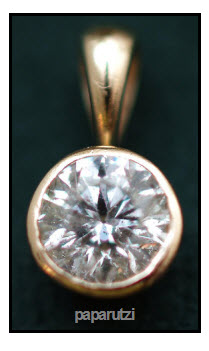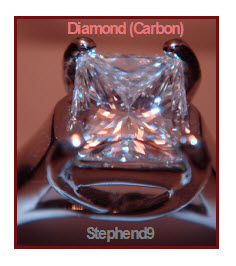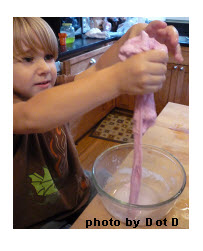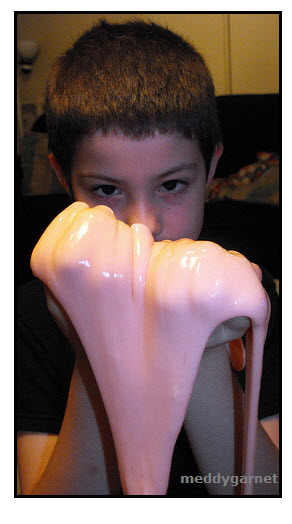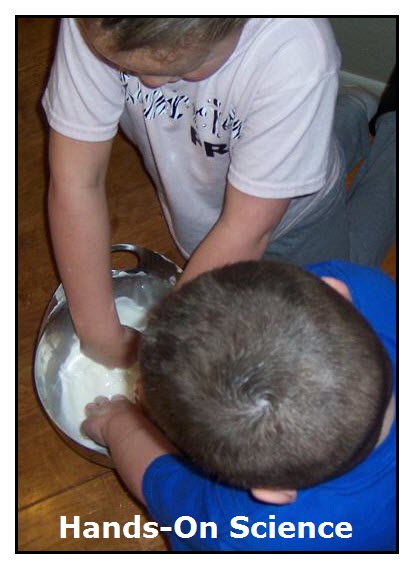Smoking Diamonds Did you know that a diamond will burn? At one time it was believed that objects burned because fire could enter them. Very hard things didn’t burn because there was no spaces for the fire to enter. Thus, diamonds were thought to be too hard to burn. Many early “scientists” did not experiment […]
Carbon
Carbon: A Natural Element There are 100+ different kinds of elements found naturally on Earth. Carbon is one of them. Carbon is fun to study. Carbon atoms link together forming different kinds of stuff. For example, the diamond shown in the photo is made of carbon atoms. Question: Are the carbon atoms in diamonds just […]
Hygroscopic
Wood is hygroscopic, which means it attracts water. When wood fills with water, the wood swells. You can use this physical chararacteric of wood to perform what appears to be magic, but instead ===it is fun science! Discover For Yourself 1. Bend five round wooden toothpicks into a V shape without breaking them apart. 2. Place […]
Polymer: Slime Index
This page contains links for information on this website about slime. Have Fun!!! Research about Slime Glossary What makes slime a dilatant? (Gets thicker when stirred or quickly pulled.) Why is slime so viscous? Recipes for Slime: Polymers Using Corn Starch Translucent Slime Using Glue Fluorescent Slime Slime Stuff Just for Fun Slime Creatures Produced […]
Dilatant: Slime
Slime is a cross-linked polymer. A polymer is made of large molecules made of repeating units called monomers. A cross-linked polymer means that there are links connecting the molecules, much like the rungs in a ladder. The ladder diagram is similar to a cross-linked polymer only in the parts making it. The cross-linked polymer molecules […]
Polymer: Slime Facts
Elmers glue and other comparable school glues are polyvinyl adhesive (PVA). Slime is made by mixing PVA glue with a solution of borax. Slime is a polymer, which is a chemical consisting of large molecules made of a linked series of repeating units called monomers. The polymer slime produced is not as runny as the PVA glue […]
Polymer:Translucent Slime
Homemade Slime Recipe 1. In a small jar, make a Glue Solution by mixing 4-ounces (1/2 cup) of Elmer’s Glue Gel with 1/2 cup of tap water. Mix thoroughly. 2. In a second small jar, make a Borax Solution by mixing 1 teaspoon of Borax powder with 1 cup of tap water. Mix thoroughly. 3. […]
Slime Glossary
The terms on this page relate to the physical and chemical characteristics of SLIME as well as other fluids with comparable characteristics. Dilatant fluid is rheopectic, which means sudden forces causes an increase in viscosity. Fluid is a term used for anything that can flow; gases, liquids, and non-Newtonian fluids. Newtonian fluid is a fluid […]
Starch Slime
Slime:Cornstarch and Water. MESSY?? You bet. FUN?? Absolutely 1. Pour 2 cups of corn starch into a large bowl. Tip: It is difficult to give an exact recipe for making cornstarch slime because humidity can be a factor. So, I have suggested that you start with a 2:1 ratio of corn starch to water. 2. […]
Glowing Slime
Fluorescent materials glow only during the time of exposure to ultraviolet light. In the photo, the glowing materials are absorbing ultraviolet light from a black light source. If the black light shining on the slime is shut off, the slime ceases to glow. You can make glowing homemade slime using the liquid in a fluorescent […]
- « Previous Page
- 1
- …
- 9
- 10
- 11
- 12
- 13
- …
- 19
- Next Page »
